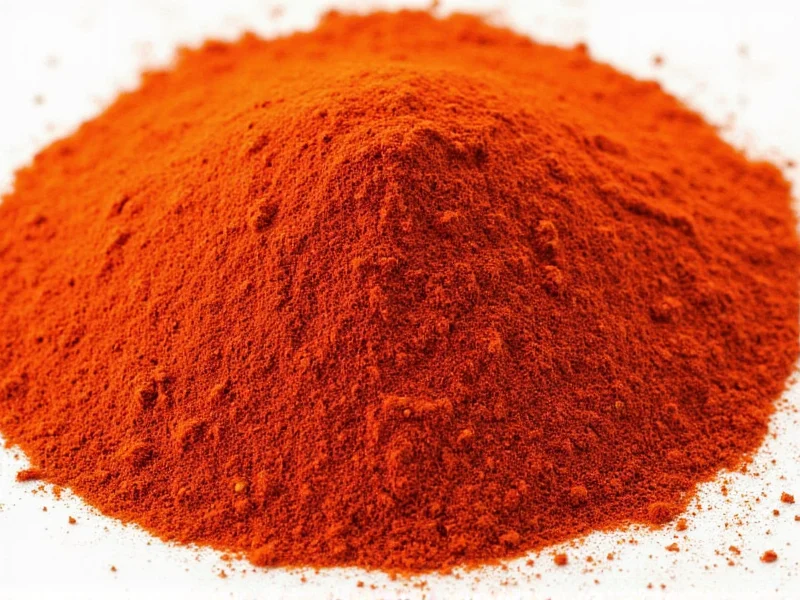Understanding the distinction between paprika and sweet paprika is essential for home cooks and culinary enthusiasts who want to use these spices correctly in their recipes. Many people mistakenly believe these are two completely separate spices, when in reality, sweet paprika represents just one category within the diverse world of paprika varieties.
What Exactly Is Paprika?
Paprika is a vibrant red spice made from grinding dried peppers, primarily varieties of Capsicum annuum. Originating in Central Mexico and +#+#+#+#+#+ by indigenous peoples, paprika spread globally through trade routes. Today, Hungary, Spain, and California produce distinctive paprika varieties with unique flavor characteristics.
The term "paprika" encompasses a spectrum of spice intensities and flavor profiles. Unlike many spices that maintain consistent heat levels, paprika ranges from completely sweet to intensely hot, depending on the pepper varieties used and processing methods. This variation explains why understanding the difference between Hungarian paprika and Spanish paprika matters in cooking.
Sweet Paprika: More Than Just Sugar-Free
Sweet paprika, sometimes labeled as "mild" or "regular" paprika, contains zero capsaicin—the compound responsible for heat in peppers. Despite its name, sweet paprika doesn't contain added sugar; the "sweet" refers to its complete lack of heat. This variety delivers pure pepper flavor with notes of fruitiness, earthiness, and subtle pepper aroma without any burning sensation.
When examining what does sweet paprika taste like, most culinary experts describe it as having a clean, fresh pepper flavor with hints of berry and citrus. The best sweet paprikas come from specific pepper varieties cultivated for flavor rather than heat, particularly in Hungary's Kalocsa and Szeged regions, which produce paprika with Protected Designation of Origin status.
Other Paprika Varieties You Should Know
Understanding paprika requires recognizing its diverse categories beyond just sweet varieties:
| Paprika Type | Heat Level (Scoville) | Flavor Profile | Best Culinary Uses |
|---|---|---|---|
| Sweet Paprika | 0 SHU | Fruity, earthy, fresh pepper | Coloring dishes, deviled eggs, potato salad |
| Hot Paprika | 500-1,000 SHU | Peppery, sharp, with noticeable heat | Goulash, spicy stews, meat rubs |
| Smoked Paprika (Pimentón) | Varies (sweet, bittersweet, hot) | Wood-smoked, deep, complex | Paella, chorizo, roasted vegetables |
| Bittersweet Paprika | 100-500 SHU | Mild heat with bitter aftertaste | Traditional Hungarian dishes |
Regional Differences in Paprika Production
The confusion around paprika varieties explained often stems from regional production differences. Hungarian paprika typically comes in eight distinct varieties ranging from sweet to hot, with specific names like "Édesnömör" (sweet) and "Erős" (hot). Spanish pimentón focuses more on smoked varieties, with classifications like "dulce" (sweet), "agridulce" (bittersweet), and "picante" (hot).
California paprika tends to be milder and brighter red than European varieties. When following international recipes, understanding the difference between Hungarian paprika and Spanish paprika becomes crucial for authentic flavor replication. Many American supermarkets only stock sweet paprika, labeled simply as "paprika," which explains why home cooks often wonder can I substitute sweet paprika for regular paprika.
Practical Cooking Applications
Knowing when to use sweet paprika versus other varieties significantly impacts your dishes. Sweet paprika excels in applications where you want vibrant color without heat interference:
- As a finishing spice for deviled eggs or potato salad
- In marinades for chicken where heat would overpower other flavors
- For coloring soups and sauces without adding spiciness
- In spice blends like Old Bay seasoning where heat isn't desired
When recipes simply call for "paprika" without specification, they typically mean sweet paprika—especially in American cookbooks. However, traditional Hungarian recipes might expect a specific variety, so checking the recipe's origin helps determine sweet paprika vs hot paprika in recipes.
Substitution Guidance
If you're wondering can I substitute sweet paprika for regular paprika, the answer depends on context. Since "regular" paprika usually means sweet paprika, substitution works perfectly. However, if a recipe specifically calls for hot paprika and you only have sweet, you'll need to add cayenne or red pepper flakes for heat.
For smoked paprika substitutions, try adding a tiny amount of liquid smoke to sweet paprika, though this won't perfectly replicate authentic pimentón. When substituting hot for sweet paprika, reduce the amount by half and adjust to taste.
Storage and Quality Considerations
Paprika loses potency faster than many spices due to its high oil content. Store both sweet paprika and other varieties in airtight containers away from light and heat. Properly stored, paprika maintains peak flavor for 6-12 months. Signs of degraded paprika include faded color, musty smell, or lack of aroma when rubbed between fingers.
When shopping, look for paprika with vibrant color and strong aroma. Premium sweet paprikas will list their origin (like "Hungarian" or "Spanish") rather than just "imported." Avoid paprika with clumps, which indicates moisture exposure and potential mold.











 浙公网安备
33010002000092号
浙公网安备
33010002000092号 浙B2-20120091-4
浙B2-20120091-4